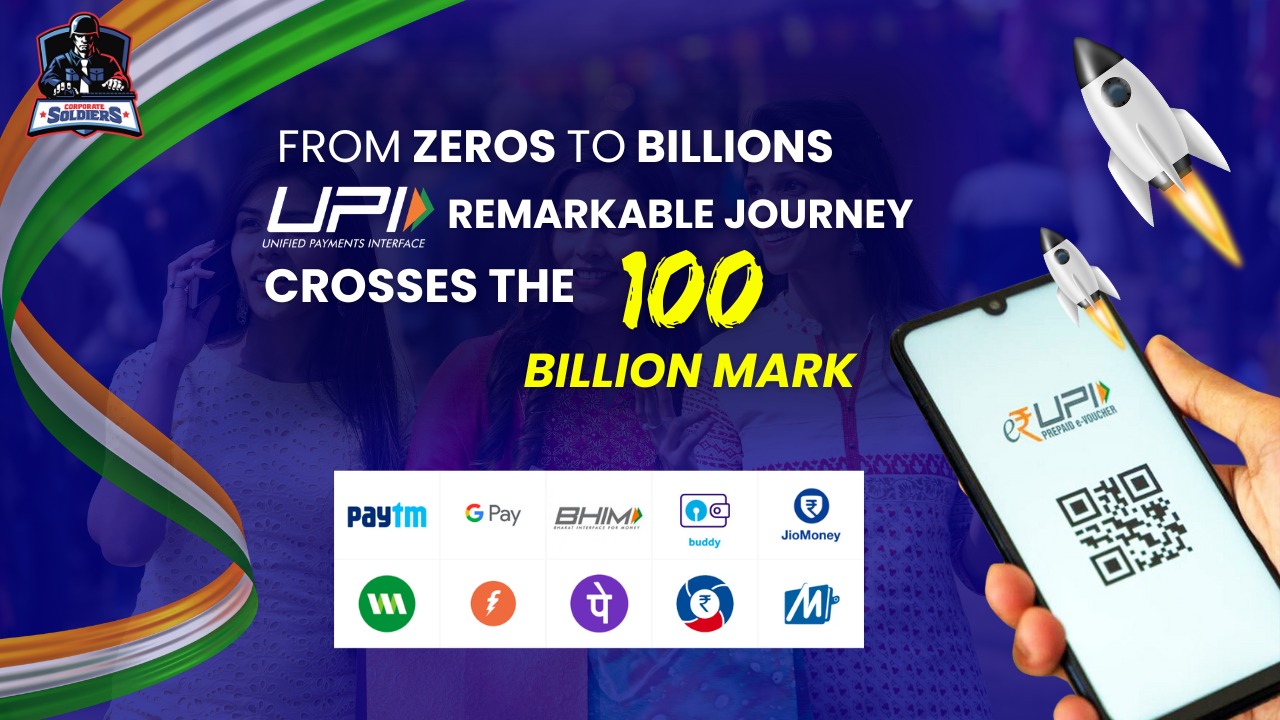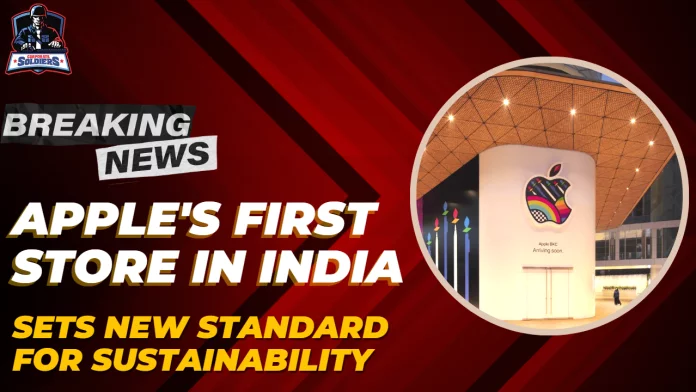In the realm of digital payments, the Unified Payments Interface (UPI) has emerged as a game-changer, revolutionizing the way Indians transact. The year 2023 witnessed an unprecedented milestone—the total number of UPI transactions crossed the remarkable threshold of 100 billion, signifying a monumental leap in India’s digital payment landscape.
Unveiling the UPI Surge:
The inception of UPI in 2016 by the National Payments Corporation of India (NPCI) introduced a seamless, instant, and secure platform for peer-to-peer and peer-to-merchant transactions. However, its exponential growth truly caught global attention in the subsequent years.
The ascent to the 100 billion mark within a short span showcases the escalating reliance of individuals, businesses, and even governments on this revolutionary payment system. UPI’s user-friendly interface, interoperability across multiple banks, and its integration into various applications have contributed significantly to this remarkable achievement.
Factors Fueling the UPI Triumph:
- Convenience: UPI’s simplicity and convenience have been pivotal in its widespread adoption. With just a few taps on a smartphone, users can execute transactions seamlessly, eliminating the need for cash or card swipes.
- Diverse Use Cases: The versatility of UPI extends beyond person-to-person transfers. It facilitates bill payments, online shopping, ticket bookings, and even donations to charitable causes, catering to a wide array of financial needs.
- Digital India Initiative: The government’s push towards a digital economy through initiatives like Digital India and Jan Dhan Yojana has significantly contributed to UPI’s proliferation across various strata of society.
- Rural Penetration: UPI’s penetration into rural areas, aided by the expansion of internet connectivity and mobile technology, has brought the benefits of digital transactions to previously underserved regions.
Implications of Surpassing 100 Billion Transactions:
The crossing of the 100 billion UPI transaction milestone holds several implications, reflecting the changing dynamics of the financial ecosystem in India:
- Financial Inclusion: UPI’s growth signifies a shift towards financial inclusion, bringing banking services to the masses, especially those who were previously excluded from formal banking systems.
- Encouraging Cashless Economy: As UPI transactions soar, India moves closer to its objective of reducing reliance on cash transactions, promoting a more transparent and accountable financial ecosystem.
- Boost to Digital Innovation: The surge in UPI transactions serves as a catalyst for further innovation in the fintech space, fostering the development of new services and technologies to enhance the user experience.
- Enhanced Regulatory Focus: The significant rise in digital transactions prompts regulatory bodies to continuously monitor and improve security measures to safeguard users’ financial data.
Challenges and the Road Ahead:
Despite its monumental success, UPI faces certain challenges:
- Security Concerns: As the volume of transactions grows, so do concerns about cybersecurity threats and fraud. Strengthening security measures remains a priority.
- Infrastructure Readiness: Ensuring a robust digital infrastructure across all regions to support the increasing volume of transactions is crucial.
- User Awareness: Continuous efforts to educate users, particularly in rural areas, about the benefits and safe usage of UPI are imperative.
The surpassing of the 100 billion UPI transaction mark in 2023 stands as a testament to India’s evolving payment landscape and its readiness to embrace digital innovations. UPI’s journey from its inception to this historic milestone signifies a remarkable transformation in the way financial transactions are conducted in the country. As technology continues to evolve, UPI remains at the forefront, poised to shape the future of digital payments in India.
The phenomenal surge of UPI transactions surpassing 100 billion in 2023 has undoubtedly posed a challenge to the traditional supremacy of global payment giants like Mastercard, Visa, and PayPal. The emergence and rapid adoption of UPI have disrupted the payment landscape, impacting these established players in various ways.
Threat to Supremacy:
- Market Share Erosion: UPI’s exponential growth has encroached upon the market share of Mastercard and Visa, especially in the Indian subcontinent. As UPI gained popularity, it captured a significant portion of the digital payment market, challenging the dominance of these global players.
- Competitive Pricing: UPI transactions, being inherently cost-effective, have positioned themselves as a more attractive option for users and businesses alike. This competitive pricing strategy has directly challenged the revenue models of Mastercard and Visa, compelling them to reconsider their fee structures to stay competitive.
- Shift in Consumer Behavior: The convenience, speed, and ease of use offered by UPI have shifted consumer behavior in India. More users are opting for UPI transactions, gradually reducing their reliance on traditional card-based payments facilitated by Mastercard and Visa.
Impact with Examples:
- E-commerce Preference for UPI: Major e-commerce platforms in India, such as Amazon and Flipkart, have witnessed a surge in UPI transactions. Users, attracted by seamless transactions and lucrative offers, increasingly prefer UPI over card payments. This shift has impacted the dominance of traditional card-based transactions, directly affecting the stronghold of Mastercard and Visa.
- Merchant Adoption: UPI’s widespread adoption among small and medium-sized businesses due to its low-cost setup and ease of use has led to a significant uptick in UPI-based transactions. Merchants, drawn by lower transaction fees compared to those of card-based payments, have started favoring UPI. This preference has chipped away at the dominance of Mastercard and Visa in merchant transactions.
- Peer-to-Peer Transactions: The simplicity of UPI for peer-to-peer transactions has attracted a massive user base. Friends splitting bills, sharing expenses, or making instant payments find UPI more convenient than traditional methods. This behavioral shift has reduced the reliance on PayPal, which previously held a strong position in such transactions.
Challenges and Adaptation:
To counter the challenge posed by UPI, global payment giants like Mastercard, Visa, and PayPal are adapting by:
- Investing in Innovation: Innovating their services to match the simplicity and convenience of UPI while ensuring global compatibility and security.
- Strategic Partnerships: Collaborating with local players and government initiatives to enhance their reach and offer competitive services.
- Revamping Fee Structures: Adjusting their fee models to remain competitive in markets where UPI has gained traction.
In conclusion, the exponential rise of UPI transactions beyond the 100 billion mark in 2023 has unquestionably disrupted the traditional supremacy of Mastercard, Visa, and PayPal in the Indian market. The convenience, low cost, and widespread acceptance of UPI have reshaped consumer behavior, challenging the dominance of these global payment giants and prompting them to adapt swiftly to this evolving landscape.










